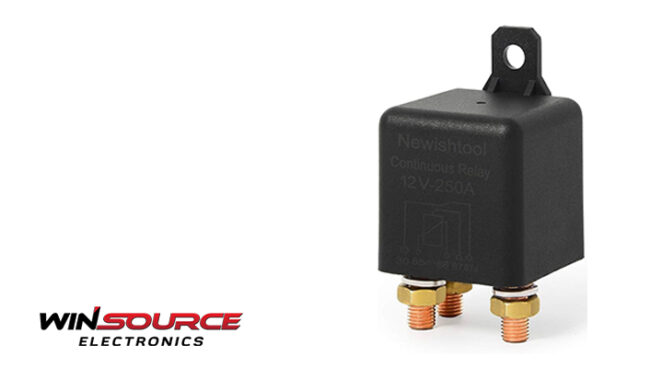
Often referred to as the “switches” of the electrical world, relays are the unsung heroes that enable the seamless operation of countless devices and systems. These versatile components bridge the gap between low-voltage control signals and high-power applications, providing isolation, amplification, and control. Understanding the various types of relays and their different applications is essential to realizing their potential in modern engineering.
Relay Type: Functional Range
Electromagnetic Relay: The most common type, an electromagnetic relay uses an electromagnet to mechanically operate the switch contacts. They come in two flavors:
- Single Pole Single Throw (SPST): Contains 1 normally open contact and 1 normally closed contact. Used in applications such as lighting control.
- Double Pole Double Throw (DPDT): Has two sets of contacts that can be connected to different circuits. Useful for applications that need to choose between two sources.
Solid State Relays (SSR): Unlike electromagnetic relays, SSRs use semiconductors such as thyristors or triacs to turn on or off. They run quietly, have faster response times, and are immune to mechanical wear and tear.
- AC solid state relay: suitable for AC loads, often used in lighting, heating and motor control.
- DC solid state relay: designed for DC loads, commonly used in battery charging, electroplating and photovoltaic systems.
Thermal Relay: Uses a bimetallic strip that bends when heated, causing the relay to trip and open. For overload protection of motors and transformers.
Reed Relay: Use a reed switch enclosed in a protective case. The magnetic field controls the contacts, making it suitable for low power applications and areas where space is the smallest.
Latching Relays: These relays remain in their last state even after the control signal is removed. They can be used in energy-saving circuits and battery-operated equipment.
Time Delay Relay: Contains a timer that delays the opening or closing of contacts after a control signal is applied. They are used in applications requiring a time delay, such as motor starting or circuit protection.
Application Panorama: From Everyday to Extraordinary
Industrial Automation: Relays are at the heart of automation systems, controlling motors, pumps, solenoids and conveyor belts. They ensure correct order and safety in the manufacturing process.
Power Distribution: Relays manage power distribution in switchboards by controlling circuit breakers, transformers and switches. They protect against overloads and short circuits.
Automotive: In vehicles, relays control components such as headlights, window motors, and cooling fans. They can handle high currents without stressing the vehicle’s electrical system.
Telecommunications: Relays play a vital role in routing phone calls and managing data traffic in communication networks.
HVAC Systems: Heating, ventilation, and air conditioning systems rely on relays to control compressors, fans, and heating elements for precise temperature regulation.
Home Appliances: Relays operate in household appliances such as washing machines, refrigerators, and ovens to manage motor-driven components.
Aerospace and Defense: Relays ensure the proper operation of critical systems in aircraft, spacecraft and military equipment.
Smart Grid: In modern power grids, relays protect against faults, prevent blackouts and enable efficient energy distribution.
Conclusion: Relays as the backbone of modern engineering
From mundane everyday tasks to cutting-edge technological marvels, relays are the unsung heroes that enable seamless operation across disparate applications. Their variety and exceptional versatility make them indispensable components in industries ranging from electronics to aerospace. By understanding a range of relay options and their wide range of applications, engineers and innovators can open up new fields of possibility in their designs and solutions.

COMMENTS